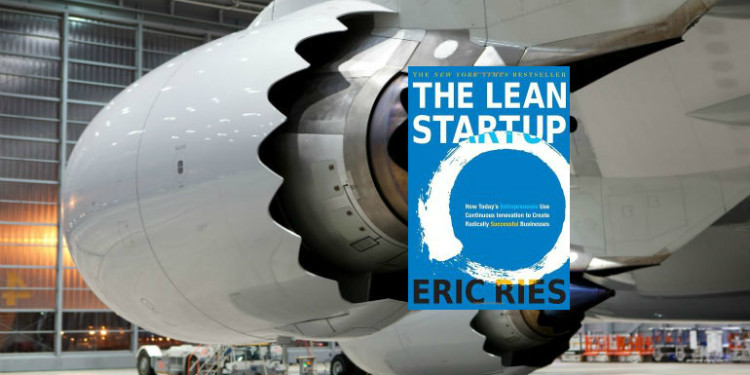Engines of Growth

The Lean Startup: How Today’s Entrepreneurs Use Continuous Innovation to Create Radically Successful Businesses by Eric Ries
Validated learning
The Lean Startup method is based on validated learning through identification of assumptions (“leaps of faith”) and testing hypothesis through creation of minimum viable products. Eric Ries believes that because of these attributes, entrepreneurship can be learned and taught. He says that entrepreneurs are everywhere and gives many examples in The Lean Startup of non-traditional entrepreneurs (e.g., people who don’t work at high tech startups in Silicon Valley).
Pivots
The results of the strategic experiments lead to moments of decision called “pivots”. He defines a pivot as “a new strategic hypothesis that will require a new minimum viable product to test.” Existing in an environment of extreme uncertainty, a startup moves forward by conducting these experiments with “small batches” of work to minimize risk, maximize learning, and accelerate understanding of the market.
The concept of “engines of growth” stands at the intersection of the concepts of a minimum viable product, selection of the right metrics, and validated learning. The engine of growth is the fundamental economic driver that is available to the startup based on its business model and customer characteristics. It is “the mechanism that startups use to achieve sustainable growth.”
In this book, Ries provides advice on identifying and managing a startup’s growth strategy. Because startups exist to identify sustainable business models, identifying, measuring, and managing the correct engine of growth is critical.
New customers come from the actions of past customers
Word of mouth, influence from product usage, advertising, and repeat purchase or use are four ways that past customers drive sustainable growth. Depending on the characteristics of the product or service, word of mouth marketing, funded marketing activities, or “sticky” attributes may be the best way to ensure long term growth.
The three engines of growth for startups
To achieve this goal, Ries identifies three engines of growth for startups along with associated metrics:
Sticky
Some products and services are designed to be consumed on a repeated basis (versus one-time like a wedding or other life event). An auction sites or on-line game are examples of services which use a sticky engine of growth. For repeat purchase products, churn and retention are key metrics. Measuring only new customer acquisition doesn’t tell you whether your sign up rate is sufficient to offset attrition.
Viral
This engine of growth runs off recommendations from existing customers to new customers. Awareness and influence are generated by usage of products; for example, you see a friend driving an SUV and decide that is the ride for you. Viral effects, such as the original hotmail team’s usage of a “get your free e-mail at hotmail” link at the bottom of each e-mail, increase adoption rates. Viral products aim to minimize the friction related to usage. In some cases, viral services do not charge customers, opting for advertising revenue, because their engine of growth is based on adding new users and network effects. The relevant metric here is the viral coefficient (number of new customers signing up as a result of one new customer). Viral services with a coefficient that is greater than 1 (for every one person who signs up, there is more than one new person getting added to the business as a result) have an exponential growth curve.
Paid
In this case, paid advertising, marketing programs, or outbound sales sustain the growth engine. Ries stresses that advertising must be funded by profitable operations, not a one-time expense. Increases in growth come from either increasing revenue per customer or lowering customer acquisition costs.
Companies that attempt to build a dashboard that includes all three engines tend to cause a lot of confusion because the operations expertise required to model all these effects simultaneously is quite complicated.
Ries points out that a company should not use generic “vanity” metrics. Instead it should metrics that are specific to its growth engine. For example, a repeat use business should not focus on tracking total customers because attrition is such a critical metric for them. Changing customer segments is a good indicator that metrics and engines of growth must be adjusted.
Matching business metrics to the engine of growth allows you to determine whether to invest more in product development, or whether you have reached the limit of value new features can provide. If the metric growth rate is decreasing or stalled, you know that the effort you’re putting into the product isn’t making a difference. Likewise, the metric that measure each type of growth will indicate whether product/market fit has been achieved. The growth and direction of key metrics are the true indicator of startup progress.
Startups occasionally ask me to help them evaluate whether they have achieved product/market fit. It’s easy to answer: if you are asking, you’re not there yet.








